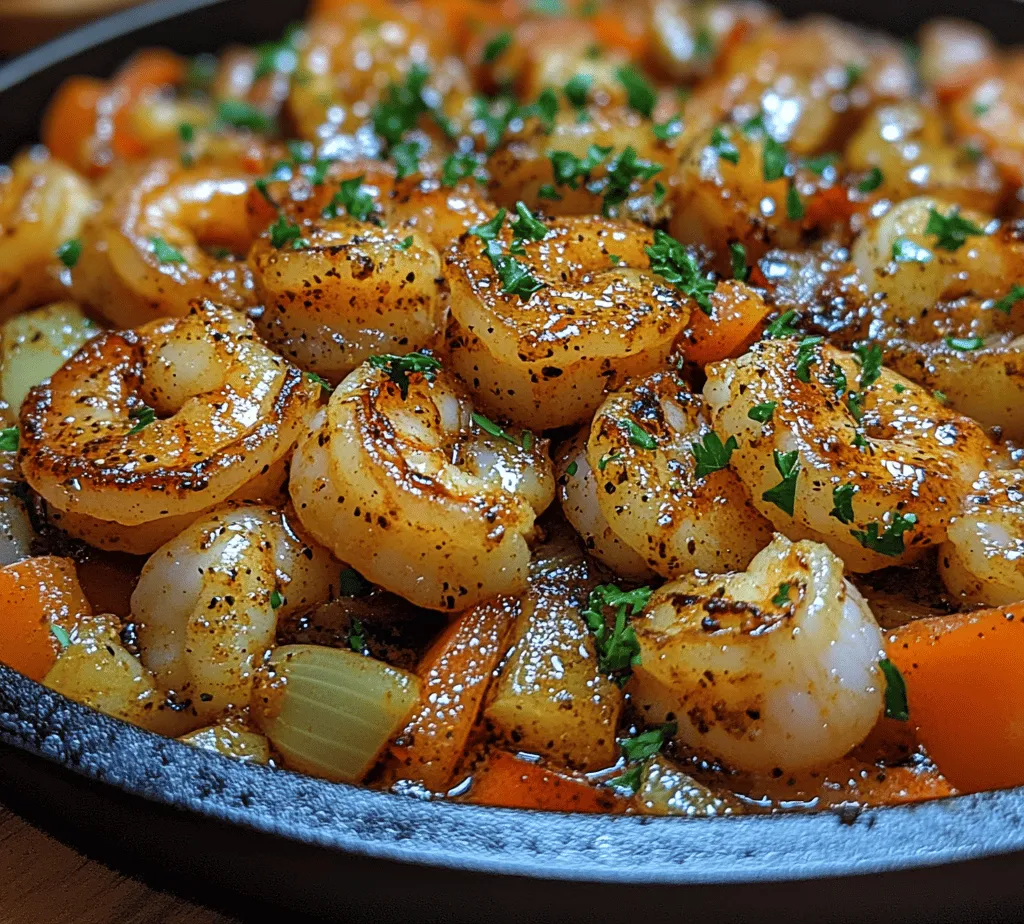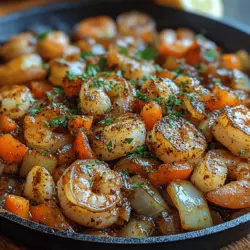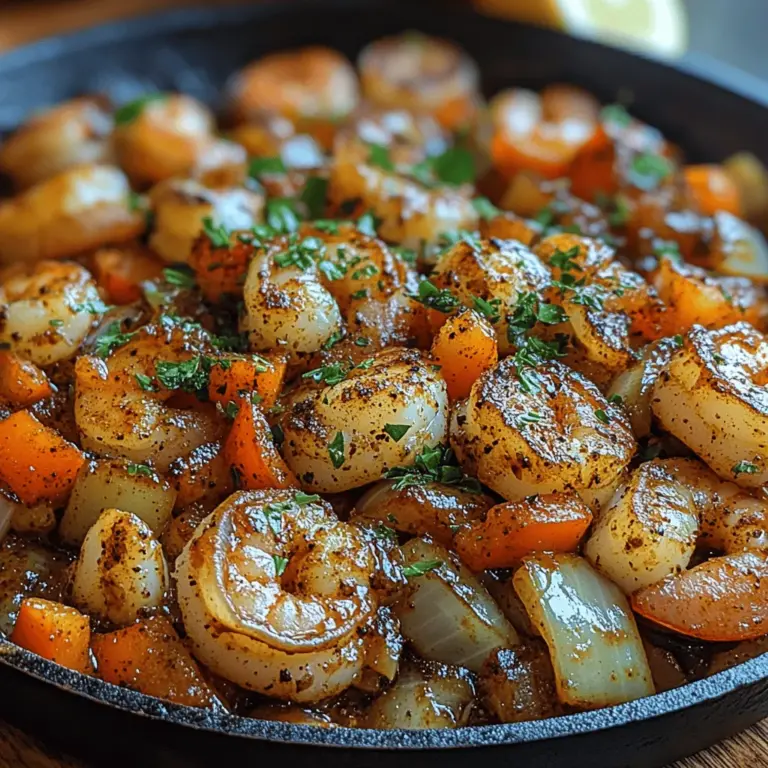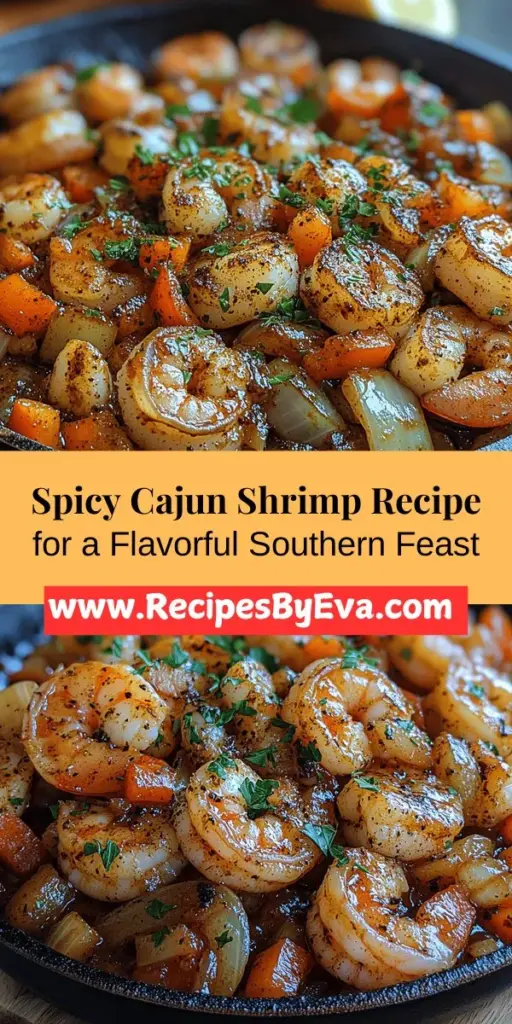Indulging in a plate of spicy Cajun shrimp is like experiencing a burst of flavor that captures the essence of Southern cuisine. This dish combines the richness of shrimp with a medley of spices and sautéed vegetables, creating a meal that is not only delicious but also quick and easy to prepare. With its vibrant colors and enticing aroma, spicy Cajun shrimp is a culinary masterpiece that showcases the robust flavors of Cajun cooking. Whether you’re hosting a dinner party or looking for a weeknight meal, this spicy Cajun shrimp recipe is sure to impress.
Understanding Cajun Cuisine
Exploring the Roots of Cajun Cooking
Cajun cuisine is a rich tapestry woven from the cultural heritage of the Acadian people who settled in Louisiana. These French-speaking settlers brought their culinary traditions to the region, which were subsequently influenced by Spanish, African, and Native American cooking practices. This fusion of flavors and techniques laid the foundation for what we now recognize as Cajun cuisine.
Historically, Cajun cooking emerged as a means of utilizing local ingredients and adapting to available resources. The result is a vibrant and diverse culinary landscape featuring bold flavors and hearty dishes. Key ingredients in Cajun cooking often include rice, seafood, and an array of vegetables, with each dish telling a story of its cultural background.
The Role of Spices in Cajun Cooking
At the heart of Cajun cuisine lies an extensive use of spices that elevate the flavor profile of every dish. Cajun seasoning, a blend of spices such as paprika, cayenne pepper, garlic powder, and onion powder, plays a pivotal role in defining the taste of spicy Cajun shrimp. This seasoning not only adds heat but also contributes complexity and depth to the dish.
The balance of flavors is crucial in Cajun cooking. While the spices bring heat, the use of fresh ingredients and aromatic vegetables, such as onions and bell peppers, mellows the intensity and creates a harmonious blend. Many spices used in Cajun dishes also offer health benefits, including anti-inflammatory properties and antioxidant effects, making this cuisine not only delicious but also beneficial for your well-being.
Ingredients Breakdown for Spicy Cajun Shrimp
Fresh Ingredients for Maximum Flavor
One of the key elements of a successful spicy Cajun shrimp dish is the quality of fresh ingredients. When selecting shrimp, it’s essential to choose high-quality, fresh shrimp for the best flavor and texture. Look for shrimp that are firm to the touch with a clean, briny scent. Fresh shrimp should be translucent and have a slight sheen, indicating their freshness.
The choice of vegetables also plays a significant role in the overall taste of the dish. Traditional Cajun recipes often incorporate bell peppers, onions, and celery, commonly referred to as the “holy trinity.” These vegetables not only add flavor but also provide a colorful presentation that enhances the visual appeal of the dish.
Herbs and spices are the final touch that elevates spicy Cajun shrimp to a whole new level. Fresh parsley or green onions can be used as a garnish, providing a pop of color and freshness that complements the dish’s rich flavors.
Understanding the Marinade
Marinating shrimp is a crucial step in this recipe, as it allows the flavors to penetrate the seafood, resulting in a more flavorful dish. Cajun seasoning is particularly effective in this regard, as its blend of spices works harmoniously with the natural sweetness of shrimp.
When marinating shrimp, it’s important to consider the duration of the marination process. A short marination of about 15 to 30 minutes is typically sufficient to infuse the shrimp with flavor without compromising its texture. For those who prefer a milder taste, adjusting the amount of Cajun seasoning can help control the spice level to suit personal preferences.
Step-by-Step Guide to Preparing Spicy Cajun Shrimp
Marinating the Shrimp
To start the process of making mouthwatering spicy Cajun shrimp, the first step is to properly marinate the shrimp. Begin by rinsing the shrimp under cold water and patting them dry with a paper towel. Place the shrimp in a mixing bowl and sprinkle with Cajun seasoning, making sure to coat them evenly.
For added flavor, you can include a splash of olive oil, minced garlic, and a squeeze of fresh lemon juice in the marinade. These ingredients will not only enhance the flavor but also provide moisture during cooking. Mix the shrimp gently until they are well-coated in the marinade.
Tips for Achieving Maximum Flavor Absorption:
1. Allow the shrimp to marinate in the refrigerator for at least 15 to 30 minutes.
2. For more intense flavor, consider marinating the shrimp for up to two hours, but avoid marinating for too long, as the acid from citrus can begin to “cook” the shrimp.
3. If you prefer a spicier kick, feel free to add some extra cayenne pepper or hot sauce to the marinade.
Sautéing the Vegetables
Once the shrimp are marinated, the next step involves sautéing the vegetables that will accompany the shrimp. Start by heating a large skillet over medium-high heat and adding a tablespoon of oil. Allow the oil to heat before adding a diced onion and chopped bell peppers to the skillet.
Best Practices for Sautéing Onions and Bell Peppers:
– Sauté the vegetables until they are softened and slightly caramelized, which typically takes around 5 to 7 minutes. This process enhances their natural sweetness and adds depth to the dish.
– Stir the vegetables occasionally to ensure they cook evenly and do not burn.
– If desired, you can add minced garlic to the skillet during the last minute of cooking to infuse a fragrant aroma without burning it.
To achieve the perfect texture and flavor, it’s essential to maintain the right timing and temperature during the sautéing process. Ideally, the vegetables should be cooked until tender yet still retain a slight crunch, providing a delightful contrast to the succulent shrimp.
By following these steps and focusing on the importance of fresh ingredients, marinating, and sautéing techniques, you’re well on your way to creating a plate of mouthwatering spicy Cajun shrimp that captures the heart and soul of Southern cuisine. In the next section, we will continue with the cooking process, ensuring that every bite of shrimp is packed with flavor and perfectly cooked to delight your taste buds.

Incorporating Garlic and Spices
When it comes to flavor, garlic is a powerhouse that can elevate your spicy Cajun shrimp to new heights. However, timing is crucial when adding it to your dish. Garlic can turn bitter if overcooked, so it’s best to add it towards the end of your cooking process. Aim to introduce minced garlic to the sautéed vegetables just a couple of minutes before adding the shrimp. This technique allows the garlic to release its fragrant oils without burning, ensuring that you achieve a balanced flavor.
The role of smoked paprika and cayenne pepper in this dish cannot be overstated. Smoked paprika lends a deep, earthy flavor that complements the shrimp beautifully, while cayenne pepper brings the heat that defines Cajun cuisine. Start with a teaspoon of each, adjusting to your taste preferences. If you prefer a milder dish, reduce the cayenne pepper or omit it altogether. Remember, the goal is to create a harmonious blend of flavors that excite the palate.
To enhance the fragrance during cooking, consider using a technique called “sweating.” This involves cooking vegetables like onions and bell peppers over low heat until they soften and release their natural aromas. As these ingredients soften, they’ll create a fragrant base that pairs perfectly with the spices and garlic, leading to a more flavorful dish.
Cooking the Shrimp to Perfection
Cooking shrimp correctly is essential for achieving that tender, juicy texture that makes this dish irresistible. The key signs that shrimp are cooked properly include their color changing from a translucent gray to a vibrant pink and their shape curling slightly into a ‘C.’ This transformation indicates that they have reached a safe internal temperature of 120°F (49°C).
Cooking times can vary based on the size of the shrimp. For smaller shrimp (41-50 count per pound), you’ll need only about 2-3 minutes of cooking time. Medium shrimp (31-35 count) will take around 3-4 minutes, while larger shrimp (16-20 count) may require 4-5 minutes. Always keep an eye on the shrimp, as overcooking can lead to a rubbery texture.
To avoid the dreaded overcooked shrimp and maintain their juiciness, consider these tips: cook them in batches if necessary, avoid crowding the pan, and remove them from heat as soon as they’re just cooked through. If you’re unsure, err on the side of undercooking slightly since they will continue cooking from residual heat even after being removed from the pan.
Creating the Flavorful Sauce
One of the standout features of spicy Cajun shrimp is the sauce that envelops it. The first step in creating this delicious sauce is deglazing the pan. After removing the shrimp, add a splash of broth or white wine to the hot pan. This process helps lift any flavorful bits stuck to the bottom, incorporating them into your sauce and intensifying the overall taste.
To further intensify the flavor of your sauce, consider adding a mix of Cajun seasonings, including dried thyme, oregano, and a pinch of salt. Let the sauce simmer for a few minutes to allow the flavors to meld together beautifully. Adjusting the acidity is essential, too. A squeeze of fresh lemon juice at the end not only brightens the dish but also balances the richness of the sauce. This interaction between flavors creates the depth that Cajun cuisine is known for.
Serving Suggestions for Spicy Cajun Shrimp
Once your spicy Cajun shrimp is perfected, it’s time to think about how to serve it. This dish pairs remarkably well with several side dishes that complement its bold flavors. Here are some excellent options to consider:
– Rice: A bed of fluffy white or brown rice absorbs the flavorful sauce, making each bite a delight. For added flavor, consider preparing the rice with a bit of Cajun seasoning or broth.
– Pasta: Tossing your shrimp with linguine or fettuccine creates a fantastic fusion dish. The pasta can soak up the sauce beautifully, making for a hearty meal.
– Bread: Crusty French bread or garlic bread is perfect for sopping up any remaining sauce, allowing you to enjoy every last morsel.
For a creative twist, consider serving your spicy Cajun shrimp in a taco format, using warm corn or flour tortillas. Top with fresh avocado, cilantro, and a squeeze of lime for a refreshing contrast.
Presentation is key to an appealing plate. Serve your shrimp in a large, shallow bowl or on a colorful platter. Garnish with freshly chopped parsley or sliced green onions for a pop of color. A sprinkle of lemon zest can also enhance the visual appeal while adding an extra layer of flavor.
Nutritional Insights
Analyzing the health benefits of the ingredients in spicy Cajun shrimp reveals some impressive nutritional profiles. Shrimp, as the main protein source in this dish, is a lean protein packed with essential nutrients. A 3-ounce serving of shrimp provides about 20 grams of protein while being low in calories and saturated fat, making it an excellent choice for those seeking a healthy meal option.
The vegetables used in this recipe—such as bell peppers and onions—are rich in vitamins and antioxidants. Bell peppers, for instance, are high in vitamin C, which supports immune health, while onions contain quercetin, a powerful antioxidant known for its anti-inflammatory properties.
Cajun spices, when used in moderation, can also offer health benefits. Many of these spices, such as cayenne pepper, may boost metabolism and provide anti-inflammatory effects. However, it’s essential to be mindful of the sodium content in pre-packaged Cajun seasonings, so consider making your own blend to control the salt levels.
Cultural Significance of Cajun Shrimp Dishes
Cajun shrimp dishes hold a special place in the heart of Southern culture. Sharing meals is a cherished tradition, often involving family gatherings and celebrations. Whether it’s a casual Sunday dinner or a festive holiday feast, Cajun cuisine brings people together, fostering community and connection.
The evolution of Cajun shrimp dishes in modern cooking reflects a blend of traditional recipes and contemporary culinary innovations. While the foundational flavors remain rooted in the past, modern chefs often experiment with ingredients, techniques, and presentation styles to create unique dining experiences. This adaptability is a testament to the rich heritage of Cajun cooking, allowing it to thrive in today’s diverse culinary landscape.
Conclusion: Savoring the Experience of Spicy Cajun Shrimp
Mouthwatering spicy Cajun shrimp is more than just a meal; it is an experience that brings together the rich flavors and cultural heritage of Cajun cooking. By following this recipe, you not only create a delicious dish but also appreciate the artistry behind Cajun cuisine. Whether enjoyed on a casual weeknight or at a festive gathering, this dish is sure to delight the taste buds and warm the heart. Embrace the culinary journey and savor every bite of your homemade spicy Cajun shrimp.
As you serve this dish to family and friends, remember that each plate tells a story—of tradition, flavor, and the joy of sharing a meal. Enjoy the process of cooking and the satisfaction of bringing a taste of Cajun culture into your home.


